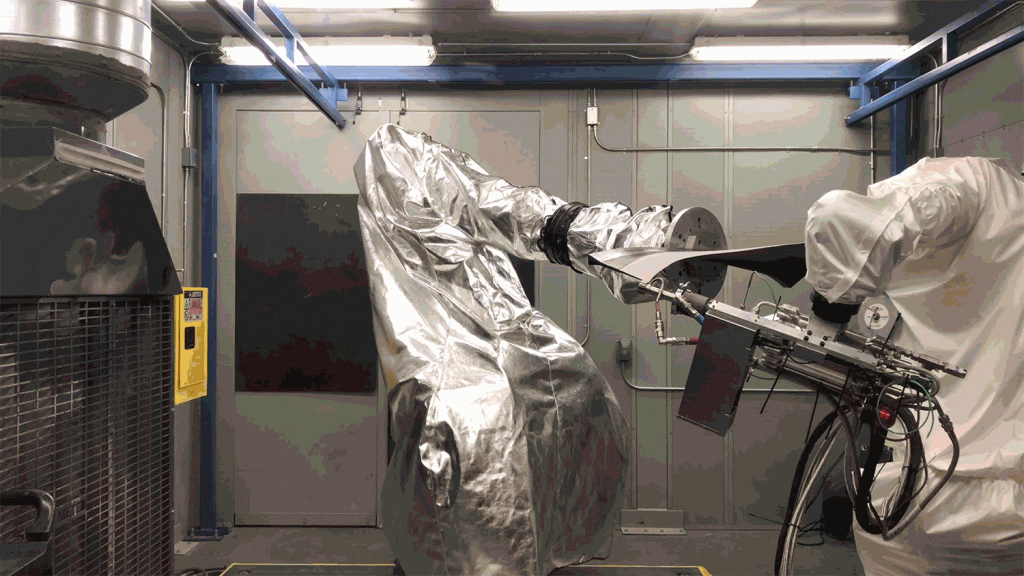Rowan University, New Jersey has received $14.5 million from the U.S. Army Research Laboratory (ARL) to develop cold spray additive manufacturing (CSAM). In a project titled “Advancing Structural Materials for Army Modernization Priorities via Direct-Write Approaches” Rowan researchers will apply technological improvements to enhance the safety of soldiers.
The project teams Rowan University with global supplier of paints, coatings and specialty materials PPG, Drexel University, Northeastern University, and the University of Massachusetts Amherst to create new materials and ways to process them.
Cold-spray additive manufacturing (CSAM)
Cold-spray additive manufacturing involves the acceleration of metal particles with a high-velocity supersonic gas jet, bonding powdered materials upon impact with receiving surfaces or substrates. Faster than the speed of sound, the particle velocity of cold spray enables rapid cure and adhesion of polymers. This results in a fast and efficient production of high performance composite parts or repair of parts.
“Additionally, this novel manufacturing methodology is a layer-by layer production of composites, which should reduce void and flaw content,” explained John La Scala, associate chief the ARL’s Materials and Manufacturing Sciences Division. “This should improve strength and durability significantly, thereby opening the potential of using this manufacturing technique to prepare composites for extreme conditions, while replacing the current expensive manufacturing methods with a much more economical methodology,”
Primary applications of the technology include creating coatings or repairing equipment. The technology has been used by engineers to repair engine gearboxes and make electric motors. A commercialized cold spray machine is now available in the form of SPEE3D’s LightSPEE3D 3D printer. Other commercial providers of cold spray-based AM include Impact Innovations, Hermle, and Titomic.

New CSAM Research Lab in Rowan
In the Cold-Spray Additive Manufacturing Research Lab at Rowan’s South Jersey Technology Park (SJTP), Dr. Joe Stanzione, associate professor of chemical engineering, will work with the team of Dr. Francis (Mac) Haas, assistant professor of mechanical engineering. “We’re creating a materials science ecosystem here at Rowan,” Dr Haas said. The lab will also bring together post-doctoral researchers, doctoral students, master students and two dozen undergraduate students.
The team’s work will focus on the manufacture and repair of polymer composites. “The high particle velocity of cold spray enables rapid cure and adhesion of polymers. This should result in fast and efficient production of high performance composite parts or repair of parts,” added La Scala. Starting with the ubiquitous polystyrene, the team will later move on to more advanced composite materials and systems as designated by the Army.
Materials developed through the research program may be used for making military equipment stronger and lighter, soldiers more agile and vehicles more durable. There is also strong potential for dual-use spinoffs into commercialized sectors such as civil aviation, automobiles, health care and space exploration.
“We will work to make materials more quickly, to make them better and easier to repair offsite and, importantly, onsite in the field,” Dr Stanzione said. “That includes everything from parts for tanks and jeeps, to usable tools, and helmets.”
For more on additive manufacturing in academia, subscribe to our 3D Printing Industry Newsletter, follow us on Twitter, and like us on Facebook. Find talent for a project, or advance your career in 3D printing – join 3D Printing Jobs to apply and advertise.
Featured image shows Provost and former Henry M. College of Engineering Dean Tony Lowman (left) and interim dean Stephanie Farrell (right) are joined by Rowan cold-spray researchers (from left) Francis (Mac) Haas, William Riddell, Joe Stanzione, and Ratneshwar Jha. Image via Rowan University.


